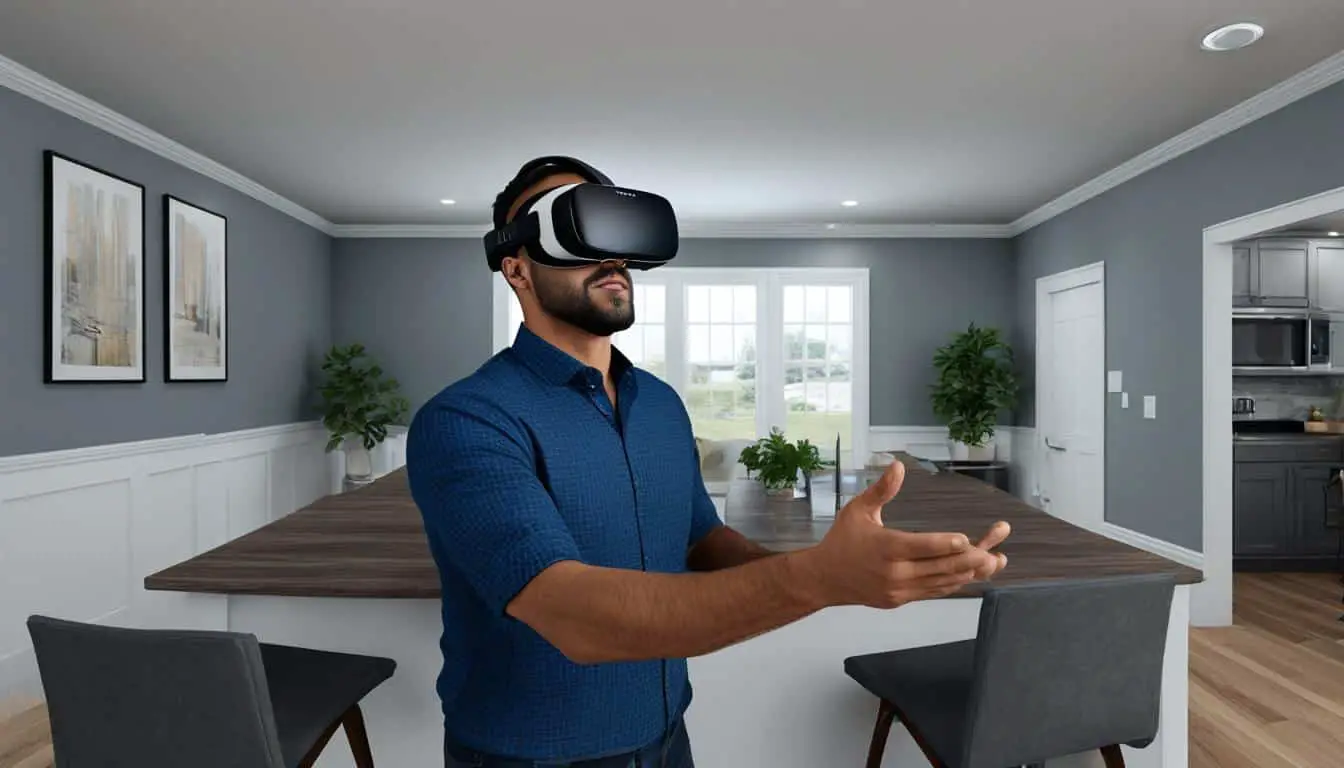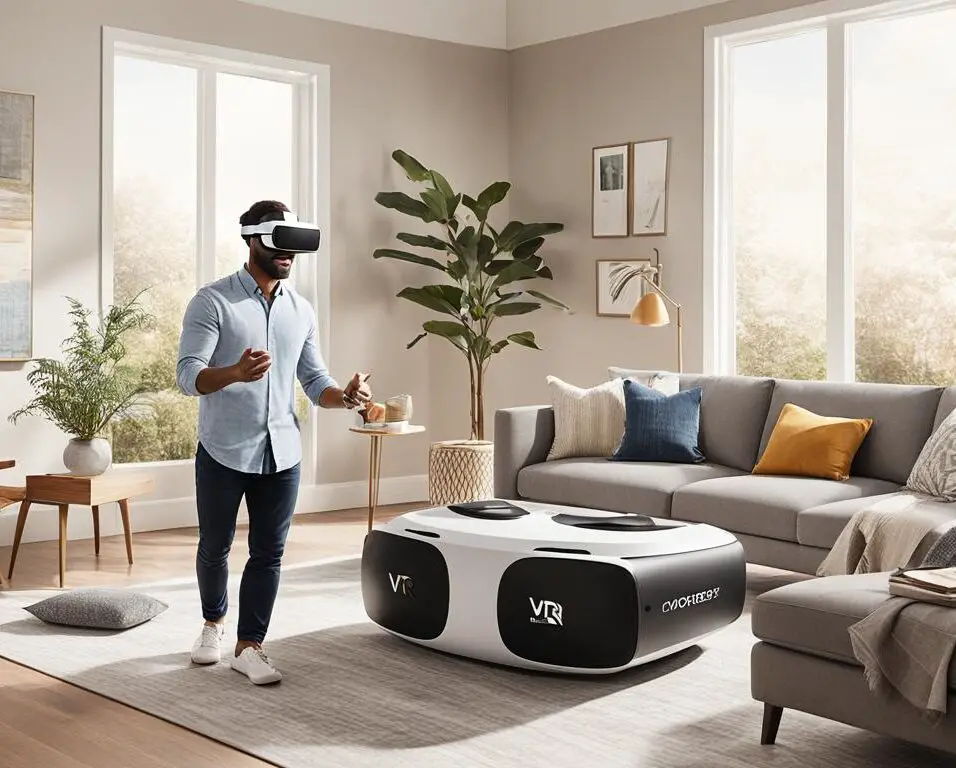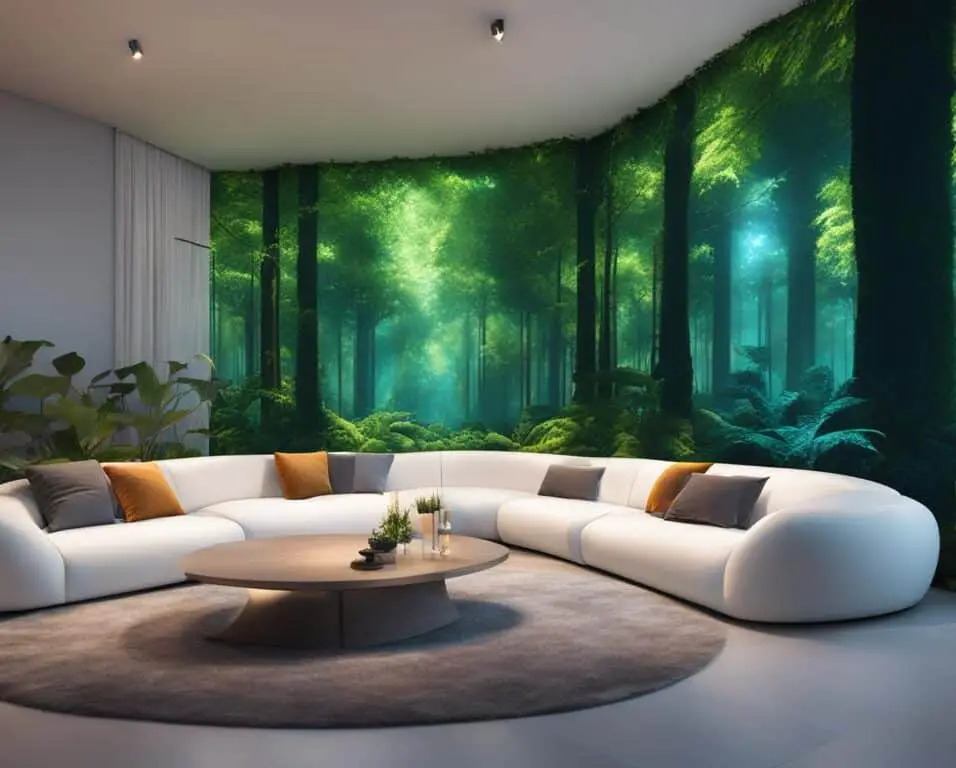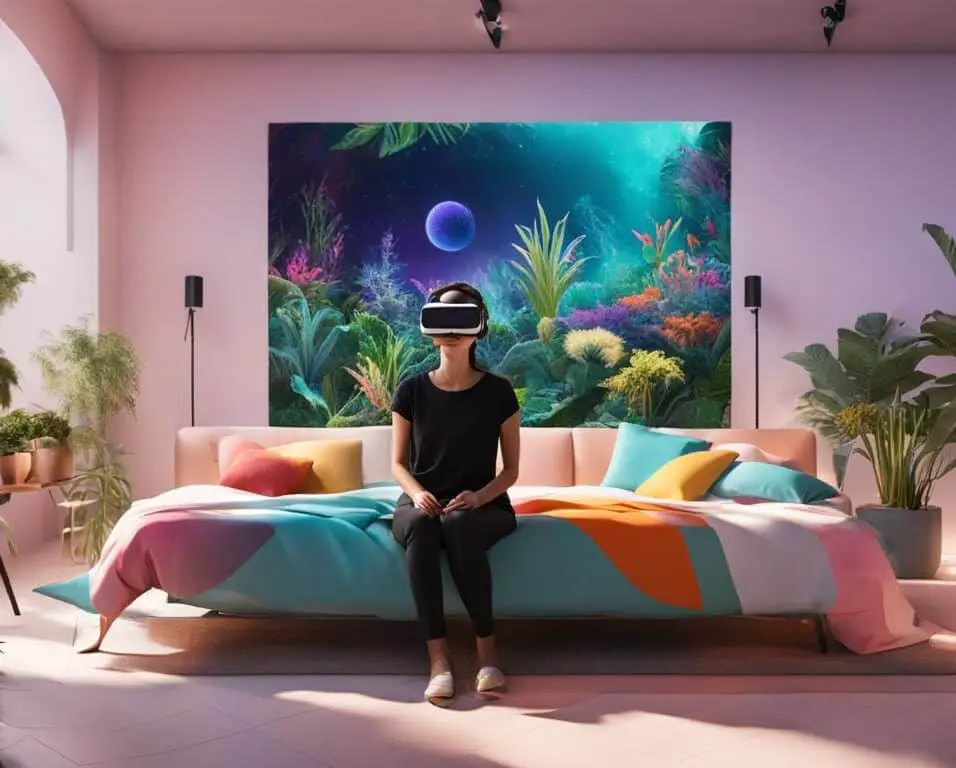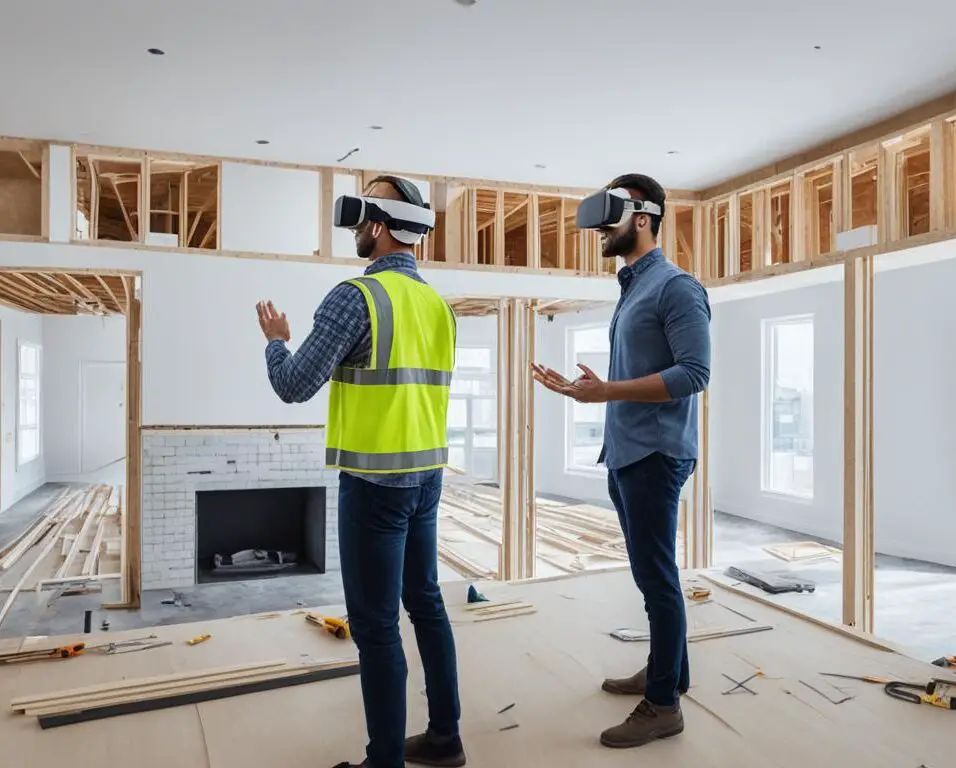DIY Projects Revolutionized: Virtual Reality in Home Improvement
In 2024, advancements in technology are set to revolutionize the way we approach DIY home projects. Virtual reality is becoming increasingly integrated into the world of home improvement, offering homeowners and DIY enthusiasts the ability to plan and visualize their projects with precision and ease. From designing and remodeling spaces to trying out different materials and layouts, virtual reality is transforming the DIY experience.
Key Takeaways:
- Virtual reality is revolutionizing DIY home projects by providing a new level of precision and visualizing capabilities.
- It allows homeowners to plan and make informed decisions by visualizing their projects before they start.
- Virtual reality tools enable users to explore various design options and experiment with different materials and layouts.
- Using virtual reality reduces errors, increases confidence, and improves communication with professionals.
- The future of virtual reality in DIY home improvement looks promising, with advancements in technology and integration with augmented reality and AI-powered planning.
The Power of Virtual Reality in DIY Home Projects
Virtual reality has revolutionized the way we approach DIY home improvement. With its immersive experience and ability to visualize designs, virtual reality offers homeowners a powerful tool to plan and execute their projects with precision and confidence.
By immersing users in a simulated environment, virtual reality allows them to experience spaces and designs as if they were real. This immersive experience enables homeowners to visualize their projects before even lifting a hammer, offering greater clarity and understanding of how their ideas will translate into the physical space.
Virtual reality tools provide users with the ability to explore different design options and experiment with materials without the need for costly prototypes. From adjusting the layout of a room to testing different color schemes or materials, homeowners can make informed decisions based on a realistic sense of what the finished project will look like.
One of the standout features of virtual reality in home improvement is the ability to walk through a future space. Users can navigate their project in a virtual environment, gaining a comprehensive understanding of proportions, flow, and functionality. This walkthrough experience offers invaluable insights, allowing homeowners to make adjustments or identify any potential issues before construction even begins.
Furthermore, virtual reality fosters collaboration and communication among homeowners, contractors, and design professionals. The shared immersive experience enables all stakeholders to visualize and discuss design choices, ensuring everyone is on the same page. This collaborative approach streamlines the decision-making process and minimizes misunderstandings, ultimately leading to successful and satisfying outcomes for DIY enthusiasts.
Virtual reality in DIY home projects has transformed the way we plan, create, and visualize. Its immersive experience and ability to bring designs to life offer homeowners the opportunity to turn their visions into reality with confidence and precision.
With the power of virtual reality, the days of relying solely on blueprints and 2D renderings are long gone. DIY home improvement now embraces an entirely new level of visualizing designs, creating an interactive and engaging process that empowers homeowners to bring their dream spaces to life.
Virtual Reality Tools for DIY Home Improvement
When it comes to DIY home improvement projects, virtual reality provides a range of tools that can greatly assist homeowners. Virtual reality apps and design software are particularly valuable, enabling users to create and modify 3D models of their spaces. By incorporating furniture, fixtures, and other elements, these tools offer a highly immersive experience in the planning phase.
One of the key features provided by virtual reality tools is the availability of interactive simulations. These simulations allow users to visualize different design choices and experiment with various options. By providing a realistic representation of the space, homeowners can explore and refine their ideas, making better-informed decisions.
Moreover, some virtual reality tools offer integration with popular home improvement retailers. This integration allows users to browse and purchase materials directly from the virtual environment, facilitating a seamless transition from the planning phase to the actual implementation of the project. By streamlining the shopping process, virtual reality enables homeowners to bring their creative visions to life with ease.
Benefits of Virtual Reality Tools in DIY Home Improvement:
- Enhanced visualization of design choices
- Opportunity to experiment with different layouts and materials
- Streamlined shopping experience through integration with retailers
- Reduces the guesswork and improves accuracy
- Increases overall confidence in decision-making
| Name | Key Features | Compatible Platforms |
|---|---|---|
| Oculus Home | Intuitive interface, realistic rendering, seamless integration with Oculus Rift headset | Windows, Oculus Quest |
| SketchUp | Intelligent modeling, extensive library of furniture and materials, collaboration capabilities | Windows, Mac |
| RoomSketcher | Easy-to-use interface, precise measurements, snapshot feature for sharing designs | Web-based, Windows, Mac, iOS, Android |
These virtual reality tools offer homeowners the opportunity to unleash their creativity while ensuring a more accurate and efficient DIY home improvement process. By harnessing the power of virtual reality apps and design software, homeowners can transform their vision into a tangible reality, creating spaces that reflect their unique style and preferences.
Benefits of Using Virtual Reality in DIY Home Projects
Using virtual reality in DIY home projects offers several benefits. First and foremost, it enhances planning by allowing homeowners to see how different design choices will look in their space. This helps reduce errors and costly mistakes during the implementation phase. With virtual reality, users can explore various options and make informed choices, increasing confidence in decision-making. Additionally, virtual reality facilitates better communication and collaboration with contractors and professionals, ensuring that everyone is on the same page before the project starts.
Visualizing Designs in Virtual Reality
Virtual reality provides a unique opportunity to immerse oneself in a simulated environment, experiencing designs and spaces as if they were real. By visualizing designs in virtual reality, homeowners can gain a realistic sense of the finished project, helping them make more accurate decisions during the planning stage. Whether it’s experimenting with different layouts, trying out various materials, or refining the details of a project, virtual reality offers an unparalleled level of detail and precision.
“Virtual reality allows users to step into their future spaces and truly understand how their choices will shape the overall design.”
– Jane Thompson, Interior Designer
The ability to take a virtual tour of a space before any construction begins can significantly reduce errors and costly revisions down the line. It allows users to identify potential issues and make adjustments early on, ensuring a smoother execution of the project.
The Role of Virtual Reality in Decision-Making
One of the biggest advantages of using virtual reality in DIY home projects is the ability to explore various design options. Virtual reality tools enable users to visually compare different layouts, color schemes, and furnishings, giving them a comprehensive understanding of the choices available. This empowers homeowners to make informed decisions based on their personal preferences and vision for their space.
Furthermore, virtual reality helps homeowners gain confidence in their choices. The immersive experience offered by virtual reality simulations fosters a greater understanding of design concepts and spatial relationships, allowing users to envision the final result with increased clarity and certainty.
Improved Communication and Collaboration
Virtual reality enhances communication and collaboration between homeowners and professionals involved in DIY projects. By sharing virtual reality models and simulations, all stakeholders can easily visualize and discuss project details. This streamlines communication, reduces misunderstandings, and ensures that everyone is aligned in terms of expectations and goals.
Table displaying the benefits of using virtual reality in DIY home projects:
| Benefits | Description |
|---|---|
| Enhanced Planning | Visualizing designs and layout options to make informed choices |
| Reduced Errors | Identifying and rectifying potential issues prior to construction |
| Increased Confidence | Gaining a realistic understanding and visualization of the final result |
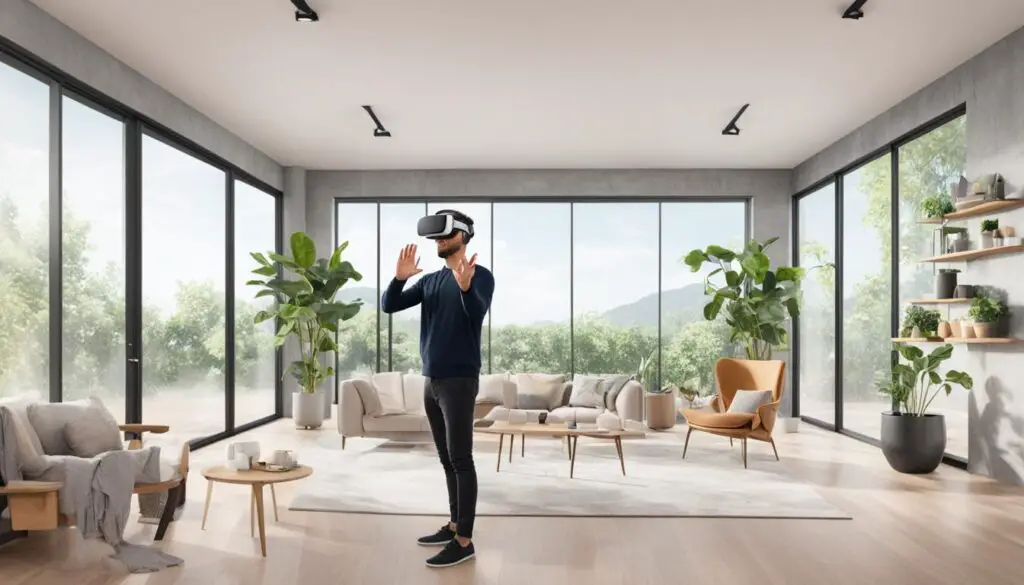
By harnessing the power of virtual reality, DIY enthusiasts can embark on their home projects with enhanced planning, reduced errors, and increased confidence, resulting in more successful and satisfying outcomes.
Future Trends in Virtual Reality for DIY Home Improvement
The future of virtual reality in DIY home improvement is poised for exciting advancements and innovations. As technology continues to evolve, virtual reality is set to deliver even more realistic and immersive experiences, transforming the way homeowners plan and execute their projects. Let’s explore some trends that we can expect to see in the near future.
Augmented Reality Integration: Bringing Virtual Designs into the Physical Space
In the coming years, augmented reality integration is expected to play a significant role in DIY home improvement. With augmented reality, users will have the ability to overlay virtual designs onto their physical spaces in real-time. This integration will enable homeowners to visualize how different design choices will look and fit within their homes, enhancing the planning process and facilitating more accurate decision-making.
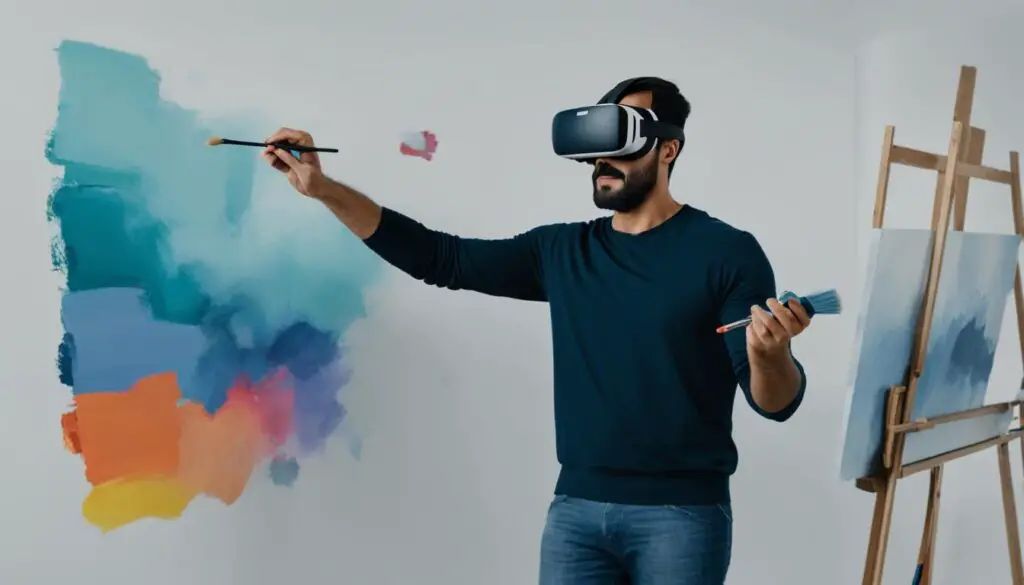
AI-Powered Planning: Optimizing Projects with Intelligent Assistance
Artificial intelligence (AI) is also projected to play a key role in shaping the future of virtual reality in DIY home improvement. With AI-powered planning tools, homeowners will be able to optimize their projects by receiving intelligent assistance. These tools will suggest cost-effective materials and layouts based on user preferences and budget constraints, helping DIY enthusiasts make informed decisions that align with their vision and resources.
Enhanced Realism and Immersion: Advancements in Virtual Environments
Advancements in virtual reality technology will continue to push the boundaries of realism and immersion. Future virtual environments will be even more lifelike and detailed, allowing users to visualize their projects with astounding accuracy. From realistic textures and lighting to interactive simulations, the virtual reality experience will closely mirror the actual outcome, providing homeowners with a heightened sense of confidence and assurance.
Collaborative Virtual Spaces: Remote Communication and Design Collaboration
The future of virtual reality in DIY home improvement will also bring about collaborative virtual spaces. These spaces will enable remote communication and design collaboration between homeowners, contractors, and professionals. Users will be able to interact with each other in the virtual environment, sharing ideas, making real-time adjustments, and ensuring everyone is on the same page before the project begins.
| Trend | Description |
|---|---|
| Augmented Reality Integration | Overlay virtual designs onto physical spaces in real-time |
| AI-Powered Planning | Suggest cost-effective materials and layouts based on user preferences and budget constraints |
| Enhanced Realism and Immersion | Advancements in virtual environments for a more lifelike and detailed experience |
| Collaborative Virtual Spaces | Remote communication and design collaboration between homeowners, contractors, and professionals |
The future of virtual reality in DIY home improvement is filled with possibilities. From augmented reality integration to AI-powered planning tools, homeowners can look forward to a more immersive, efficient, and collaborative DIY experience. As technology continues to advance, the potential for virtual reality in transforming the way we approach home improvement is truly limitless.
Overcoming Challenges in Virtual Reality for DIY Projects
While virtual reality offers many benefits, there are some challenges that DIY enthusiasts may encounter when using this technology. It’s important to be aware of these challenges in order to make informed decisions about incorporating virtual reality into your home improvement projects.
Accessibility
One of the main challenges of virtual reality in DIY projects is accessibility. Not everyone has access to virtual reality technology, which can limit its widespread adoption. However, as technology continues to advance, virtual reality equipment is becoming more affordable and accessible to a broader audience. This means that in the near future, more DIY enthusiasts will be able to take advantage of the benefits offered by virtual reality.
Cost
Cost is another factor to consider when using virtual reality for DIY projects. Virtual reality equipment can be expensive, especially if you opt for high-end devices and accessories. However, as the demand for virtual reality increases, manufacturers are introducing more affordable options to cater to a wider range of budgets. Additionally, there are virtual reality apps and software available that can be used with compatible smartphones or lower-cost VR headsets, providing a more cost-effective alternative.
Learning Curve
Using virtual reality tools and interfaces may have a learning curve for DIY enthusiasts who are new to this technology. Mastering the navigation, controls, and design features of virtual reality apps and software might require some time and practice. However, many virtual reality platforms offer user-friendly interfaces and tutorials to help users get started. With a bit of patience and perseverance, DIY enthusiasts can quickly overcome the learning curve and unlock the full potential of virtual reality for their projects.
Despite these challenges, the accessibility, cost, and learning curve associated with virtual reality for DIY projects are continuously improving. As technology advances, virtual reality will become more accessible, affordable, and user-friendly, making it an indispensable tool for DIY enthusiasts looking to plan and visualize their home improvement projects.
Conclusion
Virtual reality is revolutionizing the world of DIY home improvement, providing homeowners with a powerful tool to plan and visualize their projects. With virtual reality, users can experience their future spaces before even picking up a hammer, allowing for enhanced planning, reduced errors, and increased confidence in decision-making.
As technology continues to advance, we can expect even more exciting developments in virtual reality for DIY home improvement. The future of home improvement is becoming more immersive and interactive, thanks to virtual reality tools and advancements. Homeowners will have the ability to explore different design options, experiment with materials, and even collaborate with professionals to create their dream spaces.
Virtual reality is a game-changer in the DIY home improvement industry, offering a glimpse into the future of how projects will be planned and executed. With its ability to provide a realistic and immersive experience, virtual reality is set to transform the way we approach home improvement, making it more accessible and user-friendly for DIY enthusiasts of all levels of expertise.
FAQ
How does virtual reality revolutionize DIY home projects?
Virtual reality allows homeowners and DIY enthusiasts to plan and visualize their projects with precision and ease. It immerses users in a simulated environment, enabling them to experience their designs as if they were real.
What virtual reality tools are available for DIY home improvement projects?
There are various virtual reality apps and design software that allow users to create and modify 3D models of their spaces. These tools often come with interactive simulations that let users visualize different design choices and experiment with various options.
What are the benefits of using virtual reality in DIY home projects?
Virtual reality enhances the planning process by allowing homeowners to see how different design choices will look in their space, reducing errors and costly mistakes. It also increases confidence in decision-making and facilitates better communication and collaboration with contractors and professionals.
What are the future trends in virtual reality for DIY home improvement?
Advancements in technology will likely lead to even more realistic and immersive virtual environments. Augmented reality integration may also become more prevalent, allowing users to overlay virtual designs onto the physical space in real-time. AI-powered planning tools could help homeowners optimize their projects based on user preferences and budget constraints.
What are the challenges of using virtual reality in DIY projects?
Accessibility can be a barrier for some people, as not everyone has access to virtual reality technology. The cost of virtual reality equipment can also be a factor. Additionally, users who are unfamiliar with virtual reality tools and interfaces may face a learning curve.



